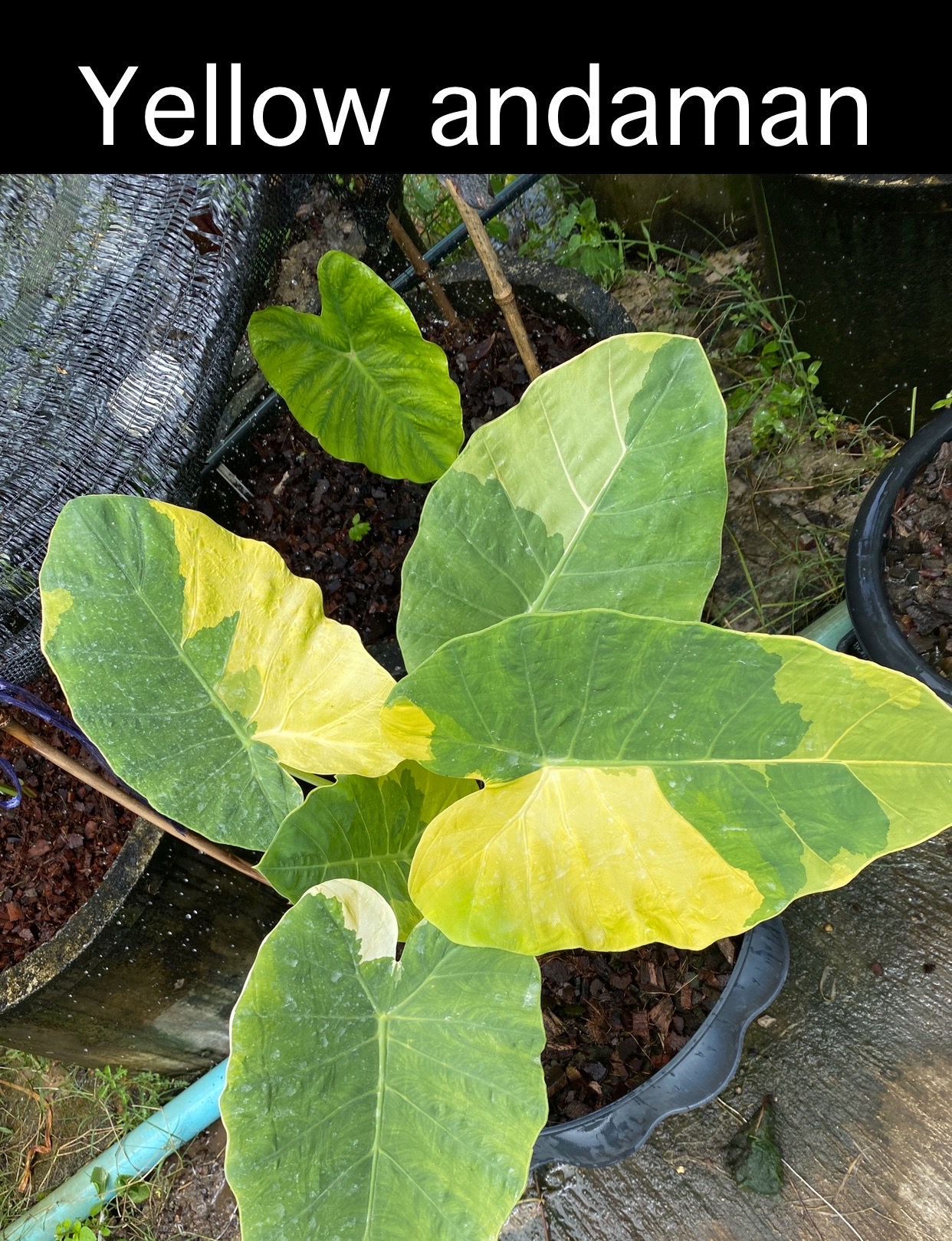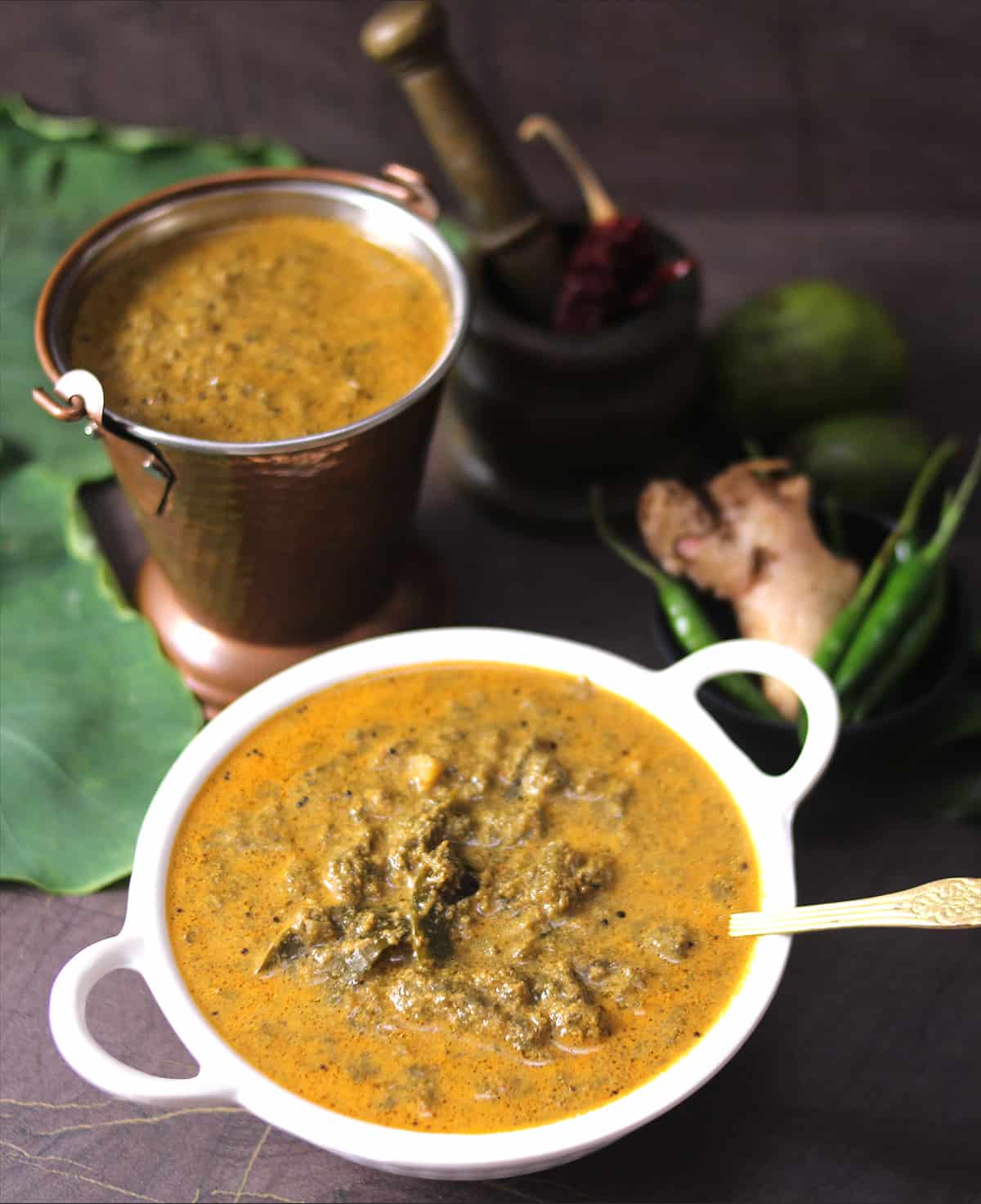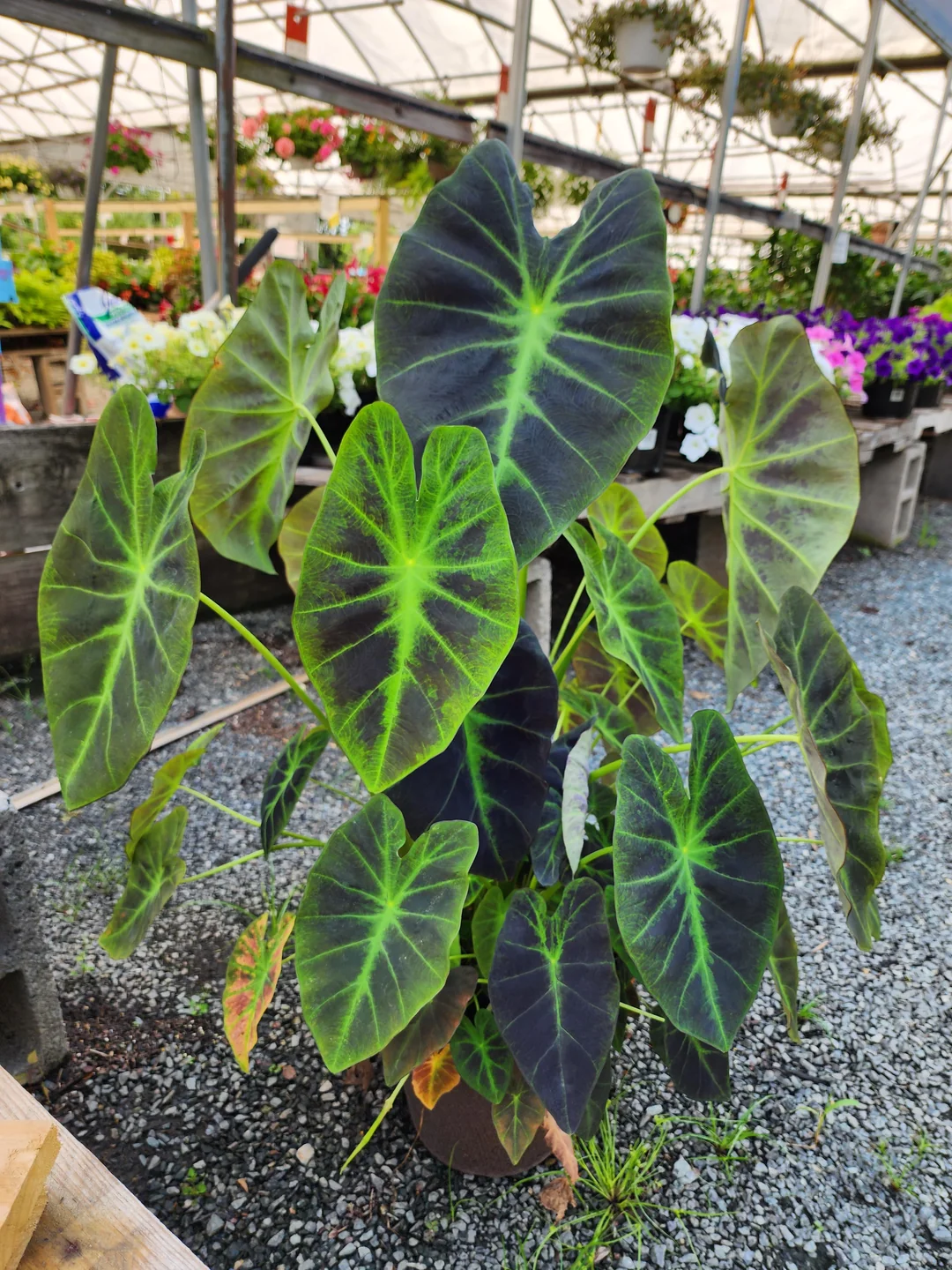Colocasia, commonly known as taro, is a tropical root vegetable that has been cultivated for thousands of years. It is a staple food for many cultures around the world and is also used in medicinal and ceremonial practices. This article will delve into the fascinating world of colocasia, exploring its description, origin, and cultivation methods.

Description
Colocasia is a member of the Araceae family, which also includes plants like philodendrons and monsteras. It is a perennial herb with large, heart-shaped leaves that can grow up to several feet in length. The leaves are typically green, but some cultivars exhibit purple or variegated foliage. The plant’s most prominent feature is its corm, a large, starchy tuber that grows underground. This corm is the edible part of the plant, providing a source of carbohydrates and other nutrients.
Colocasia Varieties
There are numerous species and cultivars of colocasia, each with its unique characteristics. Some popular varieties include:
| Variety | Description |
|---|---|
| Colocasia esculenta | This is the most widely cultivated species, with numerous varieties grown for their edible corms. |
| Colocasia gigantea | This giant taro variety is characterized by its massive leaves, some of which can reach up to 6 feet in length. |
| Colocasia ‘Black Magic’ | This cultivar features striking, almost-black leaves with dark green veins. |
Nutritional Profile
Colocasia is a highly nutritious vegetable, providing a range of essential vitamins, minerals, and other beneficial compounds. Some of the key nutrients found in colocasia include:
- Carbohydrates
- Dietary fiber
- Vitamin C
- Vitamin B6
- Potassium
- Manganese
- Copper
These nutrients make colocasia a valuable addition to a balanced diet, contributing to overall health and well-being.
Cultural Significance
Colocasia has been a culturally significant plant for many civilizations throughout history. In various regions, it has been used in traditional medicine, spiritual practices, and ceremonial rituals. For example, in some Pacific Island cultures, colocasia corms are used in important ceremonial dishes, while in Hawaii, the plant is revered for its connection to the goddess Haumea.

Origin
Colocasia is believed to have originated in the tropical regions of Asia, with evidence of its cultivation dating back thousands of years. The plant is thought to have been first domesticated in Southeast Asia, particularly in the region that is now known as Indochina.
Early Cultivation
The earliest known records of colocasia cultivation come from China, where the plant has been an important staple crop for centuries. Archaeological evidence suggests that colocasia was being cultivated in China as early as the Neolithic period, around 6000-5000 BCE.
From its origins in Asia, colocasia spread to other parts of the world, including Africa, the Caribbean, and the Pacific Islands, through trade and migration. As the plant was introduced to new regions, it adapted to local environments and became integrated into the cultural and culinary traditions of these areas.
Genetic Diversity
The widespread cultivation of colocasia has led to the development of a diverse range of cultivars, each with its own unique characteristics. Researchers have identified several genetic clusters within the Colocasia esculenta species, reflecting the plant’s adaptations to different climates and growing conditions.
This genetic diversity is a valuable resource for breeders and researchers, as it provides a pool of traits that can be used to develop new and improved varieties of colocasia. By studying the genetic makeup of different cultivars, scientists can better understand the plant’s evolution and its potential for further improvement.

Cultivation
Colocasia is a versatile crop that can be grown in a variety of climatic conditions, from tropical to subtropical regions. However, it thrives best in warm, humid environments with ample rainfall and well-drained soil.
Climate Requirements
Colocasia plants require a warm, tropical or subtropical climate to thrive. The optimal temperature range for growing colocasia is between 70°F (21°C) and 95°F (35°C). The plant is sensitive to frost and cannot tolerate cold temperatures for extended periods.
Colocasia also requires consistent rainfall or irrigation to maintain soil moisture. The plant prefers well-drained, fertile soil rich in organic matter. Ideal soil pH levels for colocasia cultivation range from 5.5 to 7.0.
Propagation and Planting
Colocasia is typically propagated through the division of the plant’s corms or the use of offshoots (also known as suckers) that emerge from the base of the plant. These vegetative parts are carefully separated and planted to establish new colocasia plants.
The corms can be planted directly in the ground or in raised beds, with the top of the corm slightly above the soil surface. Planting distances typically range from 12 to 24 inches (30 to 60 cm) between plants, depending on the cultivar and growing conditions.
Cultivation Practices
Once established, colocasia plants require regular maintenance to ensure optimal growth and yield. This includes:
- Watering: Colocasia plants need consistent moisture, especially during the growing season. Drip irrigation or regular rainfall is ideal.
- Fertilization: Applying organic or inorganic fertilizers can help promote healthy foliage and corm development.
- Weed management: Keeping the area around the plants free of weeds helps minimize competition for nutrients and water.
- Pest and disease control: Vigilant monitoring and appropriate pest and disease management strategies are essential for successful colocasia cultivation.
Harvesting and Yield
Colocasia corms are typically harvested when the leaves begin to senesce or die back, which usually occurs 6 to 12 months after planting, depending on the cultivar and growing conditions.
The corms are carefully dug up, cleaned, and prepared for consumption or further processing. Yields can vary widely, with some cultivars producing corms weighing several pounds each. On average, a well-managed colocasia crop can yield 10 to 15 tons per acre (22 to 33 metric tons per hectare).
Conclusion
Colocasia, or taro, is a versatile and culturally significant root vegetable that has been an important part of many civilizations for thousands of years. Its adaptability to various climates, nutritional profile, and diverse range of cultivars have contributed to its widespread cultivation and popularity around the world.
As the global demand for sustainable and nutritious food sources continues to grow, colocasia remains an important crop that can contribute to food security and healthy diets. Through continued research and innovation, the potential of this remarkable plant can be further explored and harnessed to benefit both producers and consumers alike.
FAQs
- What is Colocasia?
Colocasia is a genus of flowering plants in the Araceae family. They are commonly known as elephant ears due to their large, heart-shaped leaves. Several species are cultivated for their edible corms, which are a staple food in many tropical regions.
- What are the different types of Colocasia?
There are numerous Colocasia species and cultivars, each with unique characteristics. Some popular ones include Colocasia esculenta (taro), Colocasia antiquorum (eddoe), and Colocasia gigantea (giant taro).
- What are the growing requirements for Colocasia?
Colocasia thrives in warm, humid climates with full sun to partial shade. They prefer well-draining soil rich in organic matter and consistent moisture. In colder climates, they can be grown as annuals or overwintered indoors.
- Are Colocasia plants toxic?
Raw Colocasia plants contain calcium oxalate crystals, which can cause irritation and a burning sensation in the mouth and throat. Thorough cooking is essential to neutralize these crystals and make the plant safe to eat.
- What are the culinary uses of Colocasia?
The corms of Colocasia are a versatile ingredient used in various dishes worldwide. They can be boiled, steamed, roasted, fried, or mashed. The leaves and stems are also edible when cooked. Colocasia is a staple in many tropical cuisines and is becoming increasingly popular in other parts of the world.



3 thoughts on “Colocasia Overview”